Sports
Ole Miss Film Review Part 1: Fax Machine
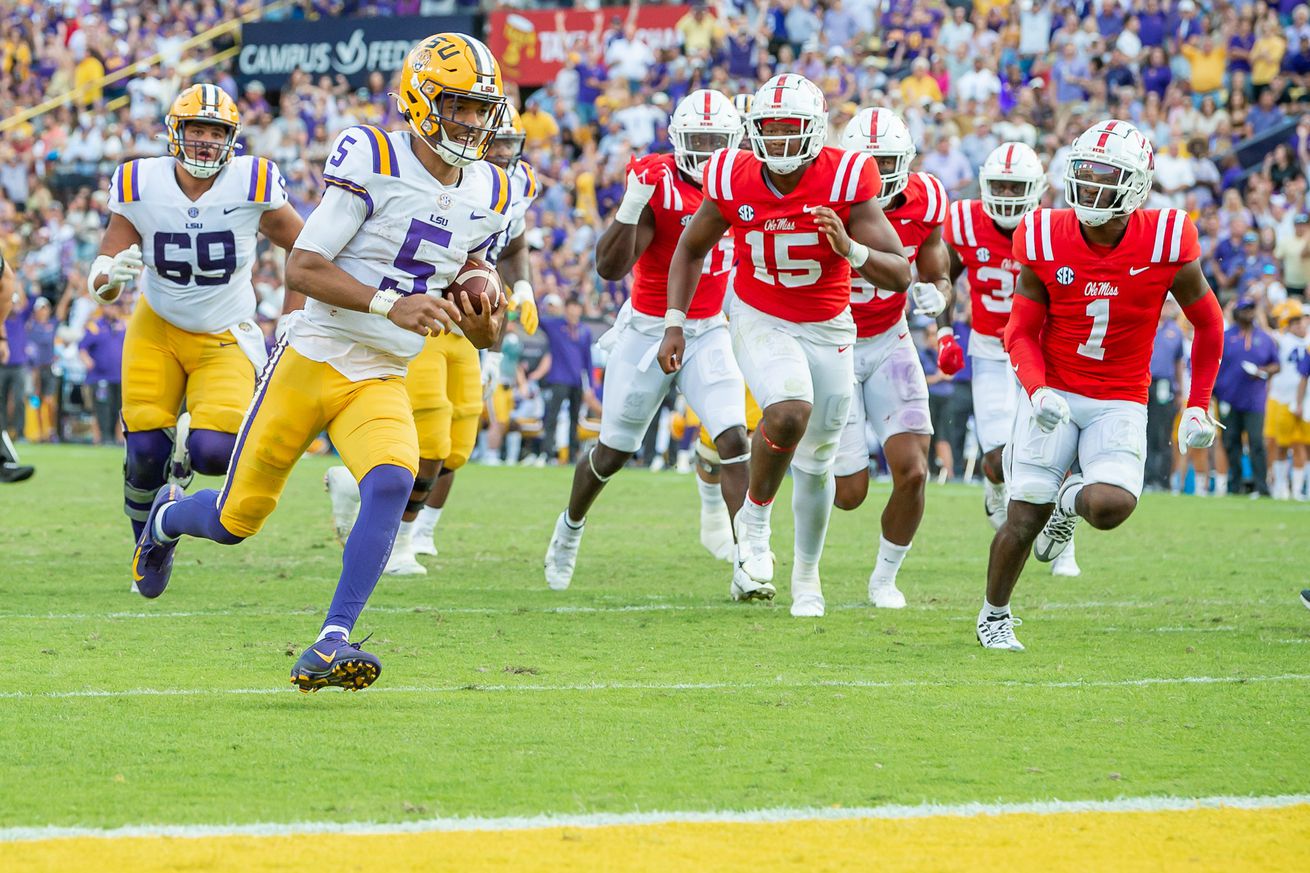

Mike Denbrock finally gets to run his offense the way he really wants to, with office supplies.
It’s pretty wild to think back upon my shift in philosophy over the past couple of years. If you had asked me three years ago, I’d have said that running the ball is mostly a waste of time, and that teams should spread you out as much as possible and throw the ball as much as possible. I was a big fan of the air raid, a big fan of these 50-60 attempt, high volume passing attacks that played “basketball on grass.”
Folks, that’s over. Defenses have changed in structure, they’ve changed in body types, they’ve changed in techniques, and they are once again vulnerable to the run. It is once again, at both the NFL and collegiate levels, essential to dominate in the box and run the ball efficiently and explosively. In recent years, the explosion of certain fronts geared to stop inside zone sidelined it as the dominant run play in college football, which it certainly was for most of the 2010s. Inside zone and the array of tags and adjustments that such a scheme allows ruled the roost for offenses like Lane Kiffin’s Alabama, Chip Kelly’s Oregon, Gus Malzahn’s Auburn, and more.
Mike Denbrock never really quit inside zone, and frankly, he never stopped having major success running it. At Cincinnati, his offenses were able to consistently run the football. This game showed how inside zone and its various tags like zone read, zone read ARC (which Mike Denbrock calls “FAX”), and various RPOs of the edge defenders can work against modern, small, 3-high defensive structures the way it did against older school 4 down teams.
This played out against Ole Miss, with LSU using inside zone and various tags off of it to completely control the line of scrimmage on offense and move the ball efficiently and easily.
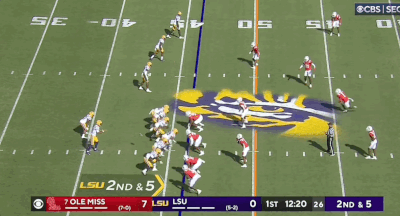
Even when Ole Miss had all of their gaps accounted for and LSU wasn’t doing anything to particularly outscheme them, LSU’s OL—in their best run-blocking performance to date— was able to consistently execute their combinations, climb to the second level, and generate push. When you can do that, the floor of your run game is very high, meaning it can be leaned on. Here, Will Campbell and Mason Taylor execute what Denbrock and Kelly call a “Triple” combination, which is the playside TE and Tackle combo blocking and climbing to the second level. Great job by Taylor holding his block (excellent run-blocking game from him) and by Campbell getting to the second level.
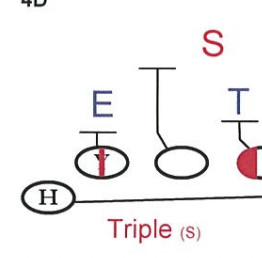
Because it’s a 3-down surface, LSU is going to want to wash everything frontside and have the back hit behind the last blocker on the line of scrimmage. This adjustment, which Denbrock has spoken about in clinics, has allowed him to continue to run inside zone effectively even against odd fronts designed to stop it.
The Copy Machine
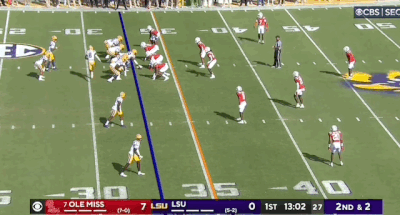
Mike Denbrock has two main RPOs he used off of inside zone, which he calls “Skip” and “Copy,” which I wrote about this offseason here (It may be useful to go read this before finishing this, but up to you). Copy is a derivative of “Fax” which is the tag they have for a TE moving across the formation to block in either say, split zone or zone read arc. In 11 personnel, against 4-down looks, the read is the DE, if he collapses, you pull the ball from the RB and take it to the edge, where you read the SAM linebacker to decide whether to keep or throw the flat route. Against 3-down looks, the first read is the MIKE linebacker and the second is the SAM, or whoever is playing the role of SAM. It plays, functionally, like a triple option. Because the DE to the playside is inside the tackle, it plays like 3-down so he reads the MIKE. The MIKE stays inside so he pulls, and the SAM widens with the flat so Daniels just keeps behind him. It’s a great way of stealing and controlling the numbers in the box and putting constraints on key defenders.
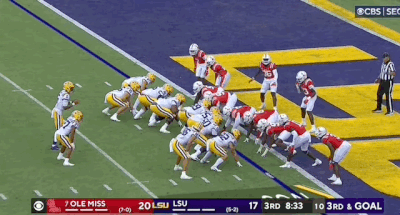
Later on, they ran it in a goal-line situation out of 14 personnel. They line up in a 2×2 look but motion Mason Taylor to the field into a 3×1. Taylor’s man defender follows him which isolates the edge defender here to be read. Taylor’s guy has to track him across the formation and he’s just too far behind to stop him from scoring. The edge stays inside the COPY route so it’s an easy pull and flip for the TD. It’s another example of Denbrock using alignments, shifts, and reads to manipulate numbers at the point of attack and place constraints on the defense in their run fits.
The Fax Machine
The big difference maker in this game, for LSU’s offense, is how they used their “Fax” tag on zone read to attack the perimeter of Ole Miss’s defense and exploit their 3-High safety structures.

The “Fax” tag is pretty simple, it’s just a sift from the Y to the other side of the formation, it could be to kick out an EDGE defender in split zone when the offense isn’t reading the backside end….
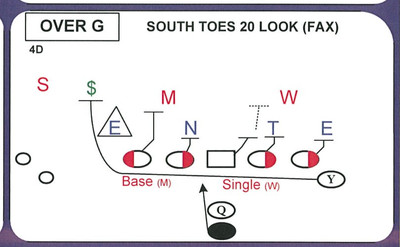
Or, when running zone read, it can serve as an arc to account for any overhang defender outside the edge.
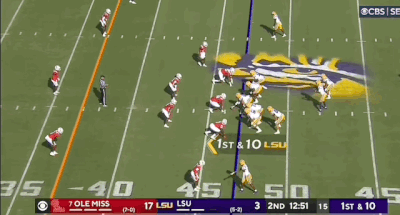
For Ole Miss, their 3-high safety structure puts the field overhang position in a little bit of conflict. With just six in the box against an 11-personnel alignment, they are short a body in the box with their six accounting for seven gaps. As a result, the other two LBs have to be inside the formation to deal with interior gaps and he’s a bit on an island on the perimeter. So LSU, in a 2×2 alignment, will read the DE and fax the TE to account for the overhang out of their 2×2. The WRs to the field account for the corner and safety to that side, making the first free hitter for the D the middle S, which is a long way away from the snap of the ball and puts him in a lot of space to try to tackle a great athlete.
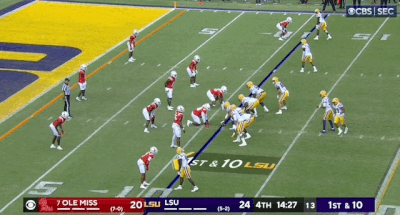
When running to the weakside of a 3×1 alignment against 3-High, the FAX picks up the boundary safety, whose job is to play the alley and structurally serve as the overhang to that side. Denbrock also has a cool rule in zone-read where the RB can continue on his path and get in the way of any defenders trying to come across and pursue the perimeter run, adding him to the blocking scheme and further increasing the numbers advantage. He climbs to the MOF safety and nudges him just enough to knock him off his path a bit.
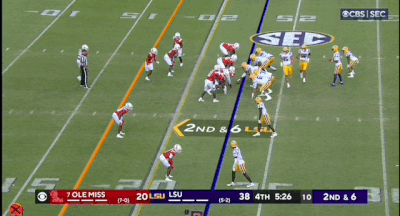
It wasn’t just 3-High structures that were vulnerable to zone-read FAX. Here, LSU employs a double TE shift in 12 personnel to create a 4-strong surface to the strong side. This gets two of the linebackers bumped over to that side and isolates a single dude on the weak perimeter, whether it ended up being the WILL LB or the guy following Taylor in man coverage is fairly immaterial. They force them to honor their numbers to the other side by bumping 2 over and FAX the off TE across weak to exploit it, reading the weak end on zone-read.
Conclusion
If you watch the Cincinnati offense from a year ago, it becomes clear that this is what Mike Denbrock really wants his offenses to look like. He wants to be able to lean on inside-zone to stay efficient, and he’s got a ton of different, clever tags and adjustments that he likes to protect it with. When it’s working, it’s pretty suffocating to try to defend, they just gotta continue to block it well. Alabama’s bodies are dramatically bigger, stronger, and better against the run, so that’s a completely different challenge, but it’s nice to see the LSU run game round into shape in the way that the offensive staff really needs it to.


